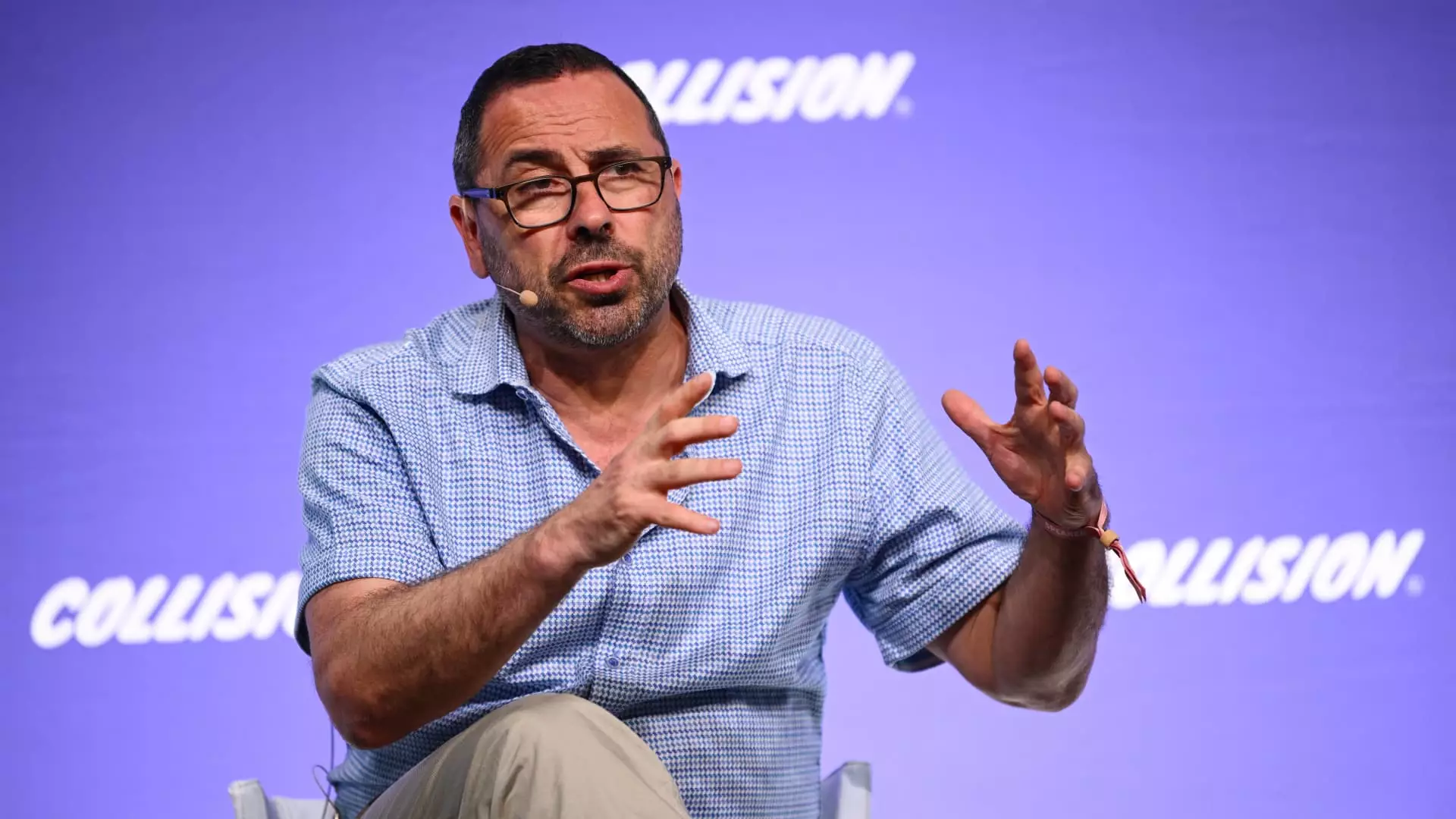The race for dominance in the AI chip-making sector is heating up, and Cerebras Systems is positioning itself as a contender aiming for a public listing on U.S. markets. As the first notable venture-backed technology firm seeking an IPO since April of this year, Cerebras hopes to harness investor enthusiasm surrounding Nvidia, a tech titan currently valued at an astounding $3.3 trillion. However, despite Cerebras’ promising technology and recent revenue growth, looming uncertainties, particularly its heavy reliance on a single client, could thwart its ambitions to ride the current Nvidia momentum.
Initial estimates suggest that Cerebras was valued at around $4 billion back in 2021, with lofty aspirations to achieve a valuation potentially doubling that figure in its imminent public offering. The firm’s innovative chip technology aims to outperform Nvidia’s established graphics processing units, particularly for complex applications like training large language models. Boasting sales that tripled to $78.7 million in 2023 and a projected revenue surge to $136.4 million in just the first half of 2024, Cerebras underscores its potential viability. Furthermore, it notes agreements in place for sales amounting to a staggering $1.43 billion, indicating strong future growth prospects.
Nevertheless, impressive numbers alone may not be sufficient to catalyze investor confidence. Analysts highlight that the potential for revenue concentration is a major red flag. An overwhelming 87% of Cerebras’ revenue thus far has been generated from a single client, G42, a corporation based out of Abu Dhabi, UAE, which also backs the company financially. Such dependence brings with it an array of risks that investors cannot ignore. The prospect of achieving diversity in its client base is crucial, yet as of now, Cerebras has little else to bolster its revenue streams outside of G42, which may induce reluctance among investors.
The stakes are higher for Cerebras as it navigates the complex waters of U.S. national security reviews due to its foreign investment connections. G42’s commitment to purchase a $335 million stake in Cerebras has raised eyebrows among regulators. The U.S. Treasury Department’s Committee on Foreign Investment in the United States (CFIUS) is responsible for scrutinizing foreign investments that could threaten national security, and there are no guarantees that CFIUS will clear the deal. Earlier attempts to allay congressional fears regarding G42’s alleged ties to Chinese interests did little to stem concerns.
Additionally, Cerebras faces a competitive disadvantage in the IPO landscape, where many major Wall Street banks—traditionally key players in tech IPOs—have opted out of underwriting the offering. The absence of significant investment banks like Goldman Sachs and Morgan Stanley from Cerebras’ corner is a glaring indication that professional financiers see potential risks. Their involvement is generally a mark of credibility that is lacking in this instance. Instead, the IPO is being led by Citigroup and Barclays—partially reputable firms but not industry leaders in tech deals.
The leadership of Cerebras must also contend with scrutiny tied to its co-founder’s past. Andrew Feldman, the CEO, carries a cloud of controversy from a prior guilty plea to circumventing accounting controls. Such a history could sway investor sentiment negatively, especially in an environment where transparency and trustworthiness are paramount.
While there are certainly challenges ahead, Cerebras does possess significant opportunities. The current excitement surrounding AI capabilities and its applications, particularly in a market dominated by few players like Nvidia, offers a glimmer of hope. The public market sentiment remains cautiously optimistic about the technology sector, especially in terms of AI chip manufacturing.
On the ground, firms like OpenAI have drawn financial support from established banks amidst a climate of rigorous capital requirements, demonstrating that investment in AI innovation is still being courted. Many potential investors, like retail investors who keep a keen eye on the prospects for the company, find the technological innovations offered by Cerebras compelling. The WSE-3 chip, for instance, branded as “the fastest AI processor on Earth,” is touted to efficiently process vast amounts of data, promising to rival Nvidia’s capacity.
To sum up, as Cerebras looks to take the plunge into public markets, the focus should be on overcoming significant hurdles both financially and strategically. The heavy reliance on a single customer, national security concerns, and lack of major underwriters are obstacles that threaten to undermine what could otherwise be a bold entrance into the public sphere. Yet, with the thrilling market for AI technology on the rise and the influx of venture capital fostering innovation, Cerebras might still forge a path forward. Addressing its vulnerabilities while capitalizing on its technological strengths will be pivotal at this juncture to ensure its potential does not fade before it can adequately establish its footing in a competitive landscape.


Leave a Reply